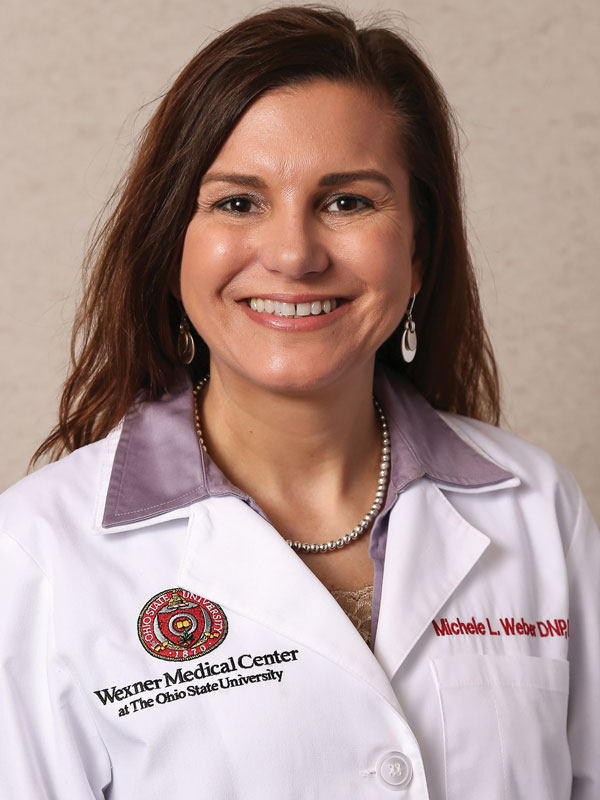Five to ten percent of patients with cancer will need to visit the intensive care unit (ICU) for a life-threatening condition. In fact, estimates suggest that nearly 30% of patients with esophageal cancer or acute leukemia and those undergoing allogenic stem cell transplantation will need ICU care.
Although many patients with cancer in the ICU have similar conditions to those without cancer, numerous cancer-specific conditions can impact the critically ill. These unique conditions require a focused, multidisciplinary effort between oncology nurses and critical care practitioners. By knowing the telltale signs and complications of treatment, oncology nurses can monitor symptoms, coordinate care, and provide a seamless transition for their patients who are critically ill.

Recognizing Critical Red Flags
Having the foresight to recognize symptoms in patients who are at risk for transitioning to the ICU can help providers quickly address and stay ahead of potential issues. ONS member Jennifer Culkin, RN, BSN, MFA, CCRN, assistant nurse manager in the Gamma Knife Center at the University of Washington-Harborview Medical Center in Seattle, WA, has more than 35 years of nursing experience in critical care and oncology. She’s come to recognize the important factors that contribute to patients being admitted to the ICU.
“It’s important to remember that many patients with cancer are often admitted to the ICU for reasons unrelated to their cancer,” Culkin notes. However, patients with cancer require a special level of care when admitted to the ICU.
“Of those who were admitted to the ICU at some point in their cancer journey, I would say that the most frequent reasons I’ve seen in my practice setting have been infection and sepsis, hemorrhagic stroke because of intratumoral hemorrhage, and complications arising from extracranial tumor sites or treatment—one example being respiratory compromise because of pleural effusion from pulmonary tumors and their sequelae.”

ONS member Michele L. Weber, DNP, RN, CCRN, OCN®, CCNS, AOCNS®, ANP-BC, clinical nurse specialist in the Department of Critical Care Nursing at The Ohio State University Wexner Medical Center and clinical assistant professor at The Ohio State University College of Nursing, works in an oncology-specific ICU. Her patients require ICU-level care but are also dealing with an active malignancy. She cares for critically ill patients on a regular basis and has come to know some of the warning signs.
“When we talk about patients who are unstable in our surgical units or in our clinics, oncology nurses must be looking for the issues that would get them admitted to the ICU,” Weber says. “We’re talking about recognizing dangerously low or high blood pressure, identifying respiratory compromise when they’re not breathing properly, and monitoring issues with bleeding and clotting. A lot of patients will have problems with clotting too much, which could lead to a stroke. The main thing is that you have to be vigilant about the challenges facing your patients.
“A good assessment is one thing we need for all potentially unstable patients,” Weber continues. “For oncology nurses, they really need to notice when a patient’s status changes. They need to be able to pick that change up early and then communicate that to the physician. Early identification and notification of things like breathing problems, blood pressure problems, or infection problems can help to get patients into the ICU soon, so they can get the care they need.”
Throughout her career, Culkin has noted several important red flags to look for in patients with cancer. “Some early warning criteria that may lead to a need for critical care are acute change in mental or neurologic status, including signs of spinal cord compression; or a change in respiratory status with a respiratory rate less than 10 or greater than 32, oxygen saturations less than 92%, and increased oxygen requirements.”
Weber and Culkin note that oncology nurses must also be vigilant of specific oncologic emergences. They should continue monitoring for issues such as tumor lysis syndrome, hyperleukocytosis and leukostasis, disseminated intravascular coagulation, and spinal cord compression.
Communicating Among the Care Teams
Working across teams and departments in an institution can help ease the process when a patient with cancer needs to be admitted to the ICU. Open lines of communication with the critical care staff is essential. In practice, Culkin notes the importance of open dialogue to ensure the best possible patient outcomes.
“Good communication and knowledge sharing between the disciplines is important. Most critical care nurses are not oncology specialists,” Culkin says. “During the transition or handoff, in addition to recent events that precipitated the ICU admission, oncology nurses can give critical care nurses the particulars of a patient’s cancer diagnosis, including stage, areas of metastasis, complications the patient has experienced in the course of his or her cancer, precautions, and past and present surgical, radiation, and systemic treatment, such as chemotherapy or targeted therapies.
“Prompt communication of acute changes and clearly verbalizing concerns to providers are some ways oncology nurses can be proactive,” Culkin continues. “Know the pathway to ICU admission in your institution, so you can help your oncology providers expedite admission if needed. Talk to the critical care nurse, get a status update, and ask for a brief in-service on the care being provided to your patient. Be sure to share your knowledge of the patient at the same time.”
In Weber’s experience, oncology nurses know their patients better than anyone. They can recognize acute changes in a patient’s condition and identify the potential complications that would accompany a patient’s specific treatment and disease profile.
“Nurses should ask themselves, ‘What are the most common complications in patients with each particular cancer type?’ and know those early signs and symptoms for those,” Weber says. “There’s no doubt this can be difficult, especially in institutions where patients with cancer are all together. You can have a patient with leukemia, next to a patient with lung cancer, next to a patient with brain cancer, and you have to know the warning signs for each one.”
Considering the breadth of complications that oncology nurses need to be aware of with potentially unstable patients, Weber recognizes the importance of communicating within the multidisciplinary team.
“It can be helpful to work with your team to identify what to watch for in specific patients,” Weber says. “When doing multidisciplinary rounds, you’ll have the nurses, doctors, respiratory therapists, surgeons, and other team members together. The physician may say, ‘Here are three things you’re looking for today. If one of them happens, let me know.’ It can be a great way to learn what’s important to watch for in your patients, and it provides clear communication regarding the patient’s needs and the doctor’s concerns. It also means that they’ll know if you’re calling them, it’s serious.”
It may be the point at which patients and their loved ones reconsider whether their treatment is working, or if it’s meeting their needs and goals in terms of quality of life.
Advocating for Your Critically Ill Patient
Even after a patient is moved to the ICU, oncology nurses can continue to advocate for their patients in a number of ways.
At Weber’s institution, they’ve done job shadowing between their ICU and oncology emergency departments. “It helps to be able to see what each department does,” Weber says. “These reciprocal exercises are particularly useful as oncology nurses explain potential interventions that could take place in the ICU, like having a feeding tube inserted. They’ve seen it. They know what it entails. These shadowing opportunities forge connections across departments too. If oncology nurses ever have questions on the floor, they can call the ICU charge nurse and get the answer.”
Culkin recognizes that an admission to the ICU can be a difficult incident for patients and their caregivers. “Sometimes an ICU admission is an emotional event for patients and families. It brings the question of mortality home,” Culkin says. “It may be the point at which patients and their loved ones reconsider whether their treatment is working, or if it’s meeting their needs and goals in terms of quality of life. Patients and families need nurses in both the ICU and the oncology unit who can help guide them. They need nurses who can listen to their spoken—and unspoken—fears, and their hopes for the time ahead of them, however long that time may be.”
Ultimately, the critical care of patients with cancer is just another area where oncology nurses need to excel. Through close work with the ICU team, nurses can help identify and proactively address critical issues to ensure the best possible care and outcomes for their patients with cancer.






